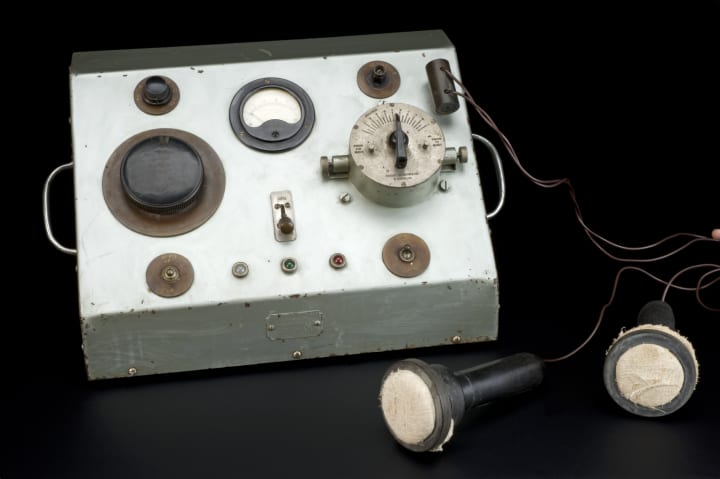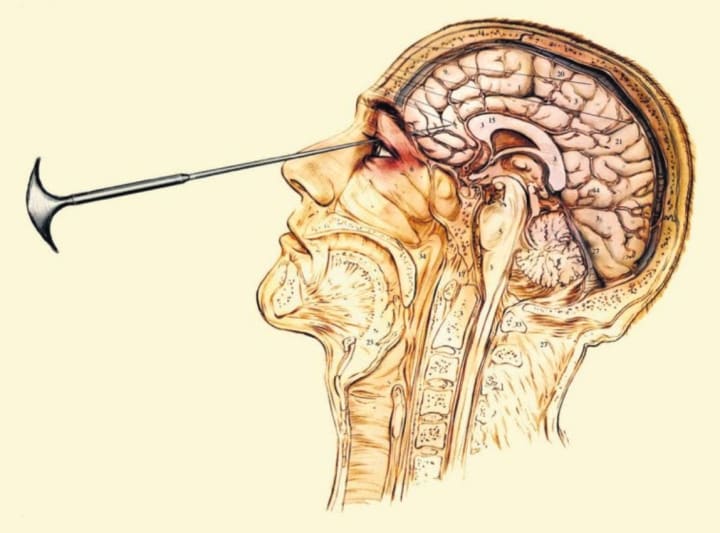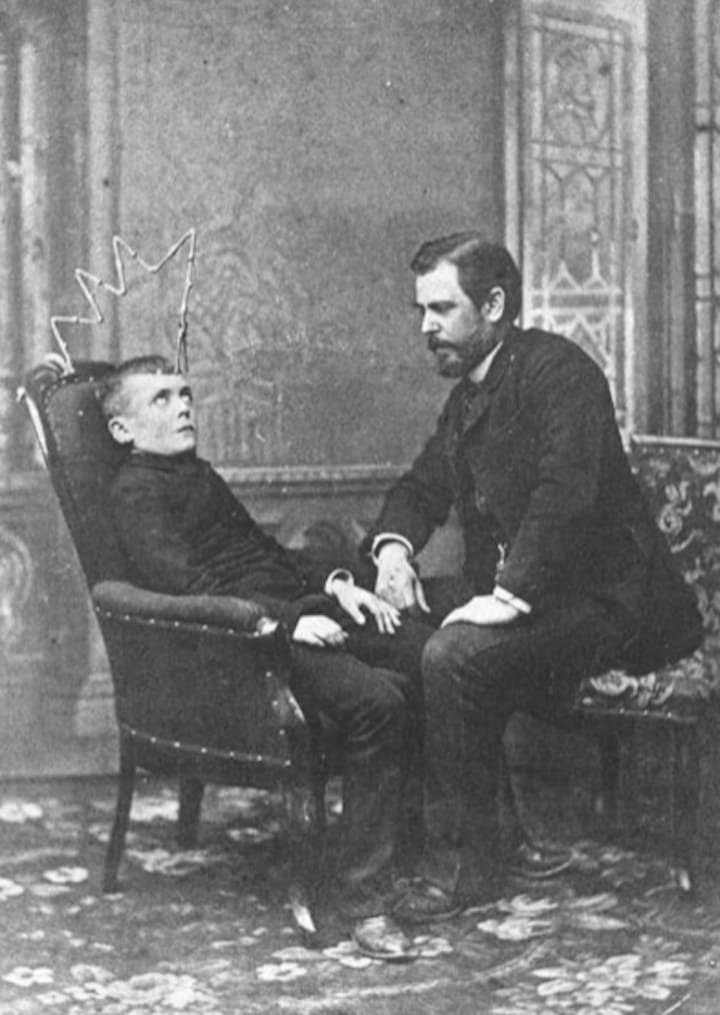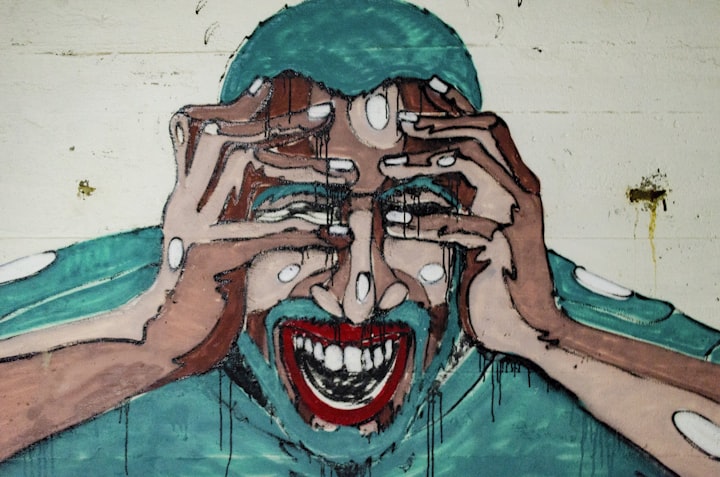Outdated Treatments for Mental Illness That Are Still Legal Today
Many outdated treatments for mental illness are still legal and being used today — and this should terrify you.

One of the most common horror movie tropes that has taken hold is the horror of old school psychiatric hospitals — and it's easy to see why. Up until recently, psychiatric hospitals were notorious for abusing patients, using unproven methods to "cure them," and also causing mental health to worsen due to the inhumane cruelty of the hospital staff.
In the 1920s, psychiatric hospital doctors were allowed to try to cure mental illness by removing body parts from patients without patient consent. Up until the 1950s, forcible sterilization was a commonplace practice for people who were deemed unfit for mainstream society. Lobotomies were regularly performed until the 1960s, and even the 1980s had seen its fair share of staff cruelty scandals involving psych wards.
Most of the time, we assume that the days of cruel mental health treatments are in the past. However, this isn't always true. There are many outdated treatments for mental illness that are still regularly practiced — even if they have been debunked.
Electroshock Therapy

Most people hope, or pray, that this treatment has gone the way of the dodo — but it's not. This is one of the most nightmarishly outdated medical treatments for mental illness that's still allowed and practiced in American hospitals.
The idea behind electroshock therapy was to cause seizures in a patient's brain as a way to balance out chemicals. Studies have shown it can potentially work in certain cases, but it can also worsen symptoms in others.
No one knows the chances of it helping a specific patient. No one really knows how it works, or why it helps, which makes it even more worrisome.
Some who underwent shock therapy noted that they had side effects like nausea, headaches, memory issues, and difficulty concentrating. That probably is to be expected when you've experienced low-grade electrocution.
Nowadays, patients are shocked while under general anesthesia, so it's not as painful as Hollywood would suggest. Oh, and it's been rebranded as Electro-Convulsive Therapy or ECT. Doesn't that make sound better?
Yeah, no.
Lobotomies

Lobotomies are, for many people, the ultimate example of horrifying medical treatments. Everything about it is traumatizing, and it's almost universally believed to be one of the most blatantly outdated treatments for mental illness imaginable.
The entire process, as its inventor did it, involves putting an icepick into a person's skull through their eye, then moving the icepick around until the patient's brain is separated. When icepick lobotomies were performed, doctors had no way of telling if the icepick went too far — unless the person died or had a seizure.
People who had lobotomies often had them done while they were awake, and often never were quite the same afterwards. Many lobotomy patients permanently lost control of their bowels and bladders, while symptoms worsened in others. Considering that their brains are literally scrambled, this shouldn't be surprising.
What is surprising about this, though, is that lobotomies are still legally performed in the United States today. Nowadays, most lobotomies are done with lasers, and the procedure itself is viewed as a last resort.
Even so, this should terrify anyone who worries about getting treatments for their mental illnesses.
Hypnosis

Hypnosis is one of the most controversial treatments for mental illness that is still widely practiced.
Many believe that it doesn't work, and others tend to believe that it's one of many debunked and outdated treatments for mental illness, addiction, and trauma. Even the original creator of hypnosis therapy, Franz Mesmer, had abandoned the practice in favor of something else.
Despite the derision, hypnosis and hypnotherapy have many devout fans who swear by it.
The problem with hypnotherapy, particularly when it comes to hypnotherapy focused on memory regressions, is that people can be heavily influenced by suggestions made by the therapist during those sessions. The fallout from false memories can be devastating for both patients and families around them.
Poorly executed hypnotherapy has been evidenced as the main cause of the Satanic Ritual Abuse Scare of the 1980s and 1990s. During this scare, children who were given hypnosis therapy for issues like eating disorders or anxiety were given false memories by therapists.
The false memories often included Satanic rituals, sexual abuse accounts involving parents, and even memories of violence. This led to innocent people getting arrested and marked as sex offenders — as well as kids who were legitimately traumatized by what they thought they experienced.
Many people are aware of the now-debunked Ritual Abuse scandal, but that doesn't seem to impede people from using hypnosis to treat mental illnesses. Despite the concrete evidence of the dangers of memory regression hypnosis, and the inefficacy of standard hypnosis therapy, people still use this form of mental health treatment today.
Exorcism

For much of human history, mental illness was assumed to be caused by curses and demonic possession. As a result, one of the most common ways to cure mental illness in the ancient world was to try to exorcise the demons they believed were in a person's head.
Today, medicine is far less religious than it once was, and doctors are now well-aware of the fact that demons do not cause mental illness. Medically speaking, exorcism is considered to be one of the most outdated treatments for mental illness you could suggest.
However, it's still legal — and is still a widely used form of treatment throughout the world. In many parts of the world, mental illness treatments via exorcisms are more common than actual appointments with therapists.
Unlike other outdated treatments for mental illnesses, exorcisms have been shown to give some people a placebo effect that helps them cope with mental illness.
Though it could potentially help, medical professionals advise against it because it often ends up doing more harm than good. In fact, multiple deaths have been attributed to exorcism in recent years and exorcism has been considered child abuse in the past.
Generally speaking, it's best to avoid bringing religion into things dealing with mental health. So, this is one treatment you might want to skip.
Trepanation

Trepanation has long been known to rank among outdated treatments for mental illness — and it's really not surprising. Trepanation is the practice of drilling a hole in the head as a way to relieve mental illness. It's a practice that's over 10,000 years old, and it originally was meant as a way to "get rid of demons in one's head."
Obviously, we are at a point where we should realize that demons aren't shacking up in people's skulls. Studies have also shown that pressure doesn't typically build up in your skull without trauma, which means that you probably shouldn't drill a hole in your head at all.
Trepanning, which results in a literal hole in your head, proved itself to be about as useful as the proverbial "hole in your head." If anything, trepanning has been shown to come with many risks — and very little (if any) reward.
That being said, trepanation is neither legal nor illegal in the United States. This means it's still technically legal to be performed, and there are people who have it willingly done to them.
Most doctors will now only drill a hole in one's skull to help remove fluid that's trapped due to a traumatic injury. This is not the same as classical trepanning meant to cure mental illness; it's first aid for critical injury.
Classical trepanning is panned in the mainstream medical community and is widely regarded as the most laughable of all outdated treatments for mental illness to have ever been passed as medicine.
The alternative medicine community, though, has begun to toy with the idea of drilling holes in one's head yet again. In most cases, classical trepanning is still used today as a "mood enhancement therapy," and Vice even did an interview with a woman who got trepanned fairly recently.
It's amazing how many people will swear by stuff that has been proven not to work, isn't it?
A Final Note
Many of the outdated treatments for mental illness on this list seem hilariously stupid by today's standards, but at the time, they weren't. Scientists didn't know much about how mental illness and mental health worked back then — and we still don't really know much now.
As science gets better, we learn more about how to better treat mental illnesses of all forms. So, who knows? Perhaps in the future, people will say similar things about Depakote or exercise therapy. We can't always tell what people of the future will say about the cures we have today.
About the Creator
Ossiana Tepfenhart
Ossiana Tepfenhart is a writer based out of New Jersey. This is her work account. She loves gifts and tips, so if you like something, tip her!






Comments
There are no comments for this story
Be the first to respond and start the conversation.